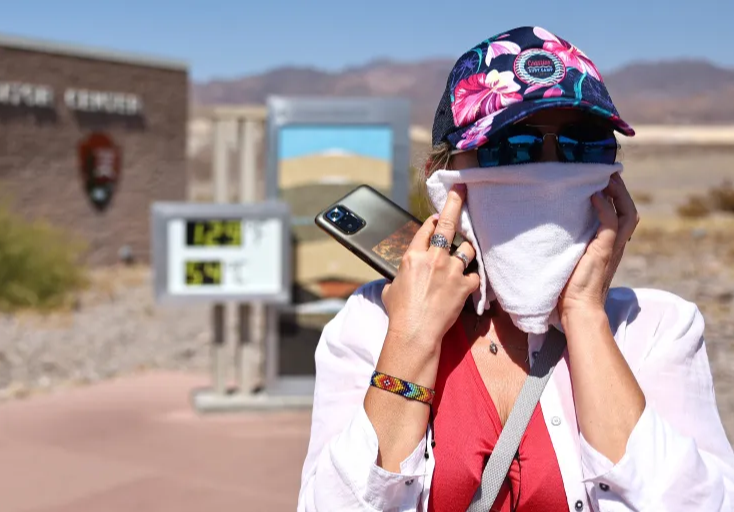
Las Vegas, July 11 (RHC)-- The western United States continues to grapple with an oppressive heatwave that is believed to have killed at least seven people, authorities say, and has spurred safety warnings across large swaths of the country.
The bout of extreme heat has smashed records across the West, while further stoking concerns over the impacts of the climate crisis.
On Wednesday, the city of Las Vegas in Nevada was set to surpass its previous record of four consecutive days over 46.1 degrees Celsius (115 degrees Fahrenheit). That comes after heat in the city smashed the 2021 single-day record of 46.6C (116F) when it reached 48.8C (120F) on Sunday.
“This is the most extreme heatwave in the history of record-keeping in Las Vegas since 1937,” said meteorologist John Adair, a veteran of three decades at the National Weather Service office in southern Nevada.
Local resident Alyse Sobosan said this July has been the hottest in the 15 years she has lived in Las Vegas. “It’s oppressively hot,” she told The Associated Press news agency. “It’s like you can’t really live your life.”
Health officials have emphasised that the heat can pose serious health risks. “Even people of average age who are seemingly healthy can suffer heat illness when it’s so hot it’s hard for your body to cool down,” said Alexis Brignola, an epidemiologist at the Southern Nevada Health District.
The heatwave has also broken records in the northwestern states of Oregon and Washington in recent days, with the temperature topping 39.4C (103F) in the city of Portland and 40.5C (105F) in Salem and Eugene.
The Oregon state medical examiner said on Tuesday that the heat is believed to have caused at least six deaths. A motorcyclist also died from heat exposure in Death Valley National Park in California on Saturday, as temperatures reached 53.3C (128F) there. In both states, the dry and hot conditions were also fuelling wildfires, including a new blaze in Oregon dubbed the Larch Creek Fire, which quickly grew to more than 12 square kilometres (5 square miles) on Tuesday evening.
In California, firefighters were battling at least 18 wildfires on Tuesday, including a 109sq km (42sq mile) blaze that prompted evacuation orders for about 200 residences in the mountains of Santa Barbara County.
The heatwave comes after June marked the 13th straight month of record-breaking monthly temperatures around the world. In total, more than 161 million people across the US were placed under heat alerts on Tuesday.
The threat was particularly pronounced in the southern state of Texas, where more than a million people remained without power following Hurricane Beryl, with the city of Houston particularly hard-hit.
On Tuesday, a day after the storm made landfall, U.S. President Joe Biden approved a major disaster declaration, opening federal resources for the state. “The greatest concern right now is the power outages and extreme heat that is impacting Texans,” Biden said in a statement. He cited the high rate of deaths from extreme heat in the US, which the Centers for Disease Control and Prevention puts at about 1,220 a year.
“As you all know, extreme heat kills more Americans than all the other natural disasters combined,” he said. At least one person in Louisiana and six people in Texas were killed when Beryl made landfall as a Category 1 hurricane. That came after the storm tore through the Caribbean, killing at least 11 people.

